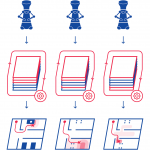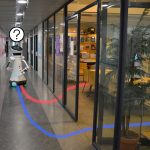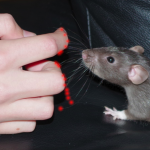Mapping and Navigation

For any mobile robotic platform, the ability to navigate its environment is important. Avoiding dangerous situations such as collisions and unsafe conditions is a crucial capability to achieve autonomy. Moreover, robots need to maintain a representation of their environment in order to properly operate inside it; this is achieved through maps, often built by the robot using its sensors.
These maps can contain only obstacle positions or include other information useful to the robot, like semantic understanding of objects and areas in the environment.
What we do
- Uncertainty-aware mapping, where we exploit deep learning uncertainty to improve navigation safety;
- Information-theoretic path planning, where navigation is guided by information gradient;
- Resource constrained path planning, where path planning is optimized under resource (e.g., fuel, computational) constraints;
- Neuro-inspired path planning, where conventional robotic problems are solved via brain-inspired models.
Current Projects

Hypermaps: Closing the complexity gap in robotic mapping
Hypermaps aim at improving how robots manage data about the environment they inhabit.

Occupancy Uncertainty Maps
In this project we research how to build maps which include the uncertainty of the robot over the occupancy of the objects in the environment.
We have shown how the constructed maps can be used to increase global navigation safety by planning trajectories which avoid areas of high uncertainty, enabling higher autonomy for mobile robots in indoor settings.
Past Projects

Human-inspired navigation for robots
Humans possess the innate ability to navigate from one location to another and orient themselves to avoid getting lost in the process. Studies from rodents and other model species have provided unprecedented insights into the potential neural correlates of mammalian spatial cognition. Yet, those correlates have so far revealed little about applicable principles of navigational […]

Bio-inspired SLAM
Simultaneous localization and Mapping a.k.a. SLAM has been a well researched topic in the robotics community for over two decades. However, with the recent advances in the Neuroscience yielding deeper insights into the neural correlates of the mammalian brain, there is renewed interest in further exploration of nature inspired SLAM approaches. Rats, bats, and other […]